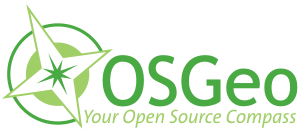Selected Presentations
Home > Presentations > Abstract details
Title
STATE OF THE ART OF FOSS4G FOR TOPOLOGY AND NETWORK ANALYSIS
Abstract
Many GIS OpenSource Softwares provide functionalities to deal with geometries, even particularly advanced algorithms. But as far as topology and network analysis are concerned, the offer becomes sparse.
This is a study of compared topology and network analysis functionalities in current FOSS4G.
Dealing with topology and network is important, since many problems in geomatics can be modelled as graphs of relations between entities. The most wanted functionality is probably routing on road networks. But other features are often needed for lots of domains. Networks may be transportation networks but may also concern hydrology, telephony and computer, electricity, oil and gas, or more original but still geographical usages like personal interactions between people.
Topology in GIS is described in a lot of academical papers and some standards, namely OGC SQL/MM. They define a common way of modelling and accessing a topological data set.
A few softwares provide topology functionalities with or without GIS orientation, following standards or not, with various feature sets implemented.
GRASS is probably the most advanced software as far as topology and networks are concerned. Its implementation covers graph modelling, accessors and modifiers, and lots of associated functionalities. It provides some great network analysis features, such as shortest path, travelling salesman or sources allocation.
QGIS can access GRASS methods and therefore is a good candidate for topological GIS operations.
PostGIS has got an early stage modelling and accessors feature set, and PgRouting can be added to it, so as to get a routing implementation, and geometric / topological data converters.
GvSIG implements as well a topology mechanism and provides network operations such as stops manager, minimum path, minimum spanning tree, origin/destination matrix and more…
Other topological tools, not necessarily linked to GIS can also be used. BOOST library is a good example, as it includes some routing algorithms.
Authors
Vincent Picavet - Oslandia

